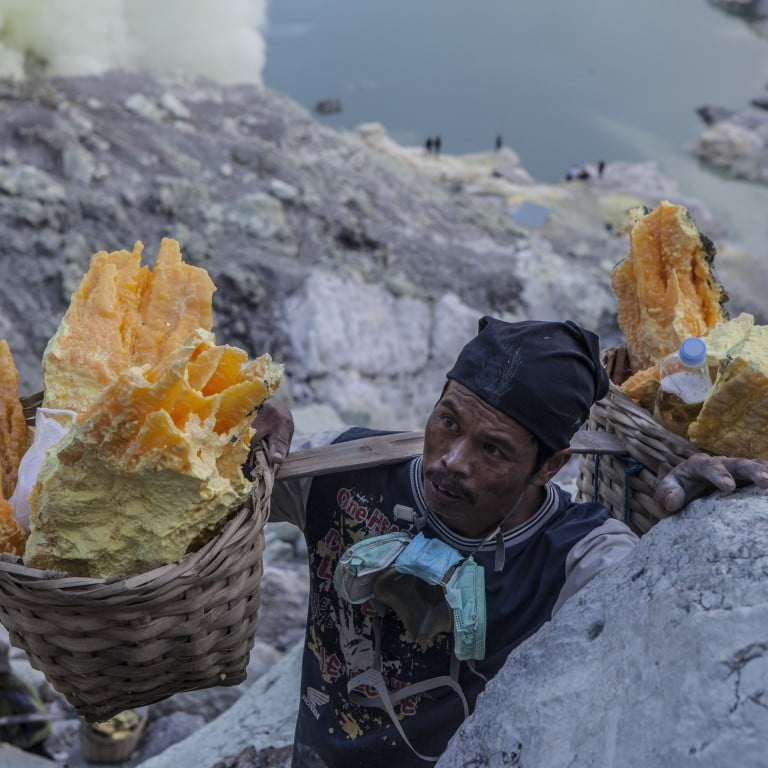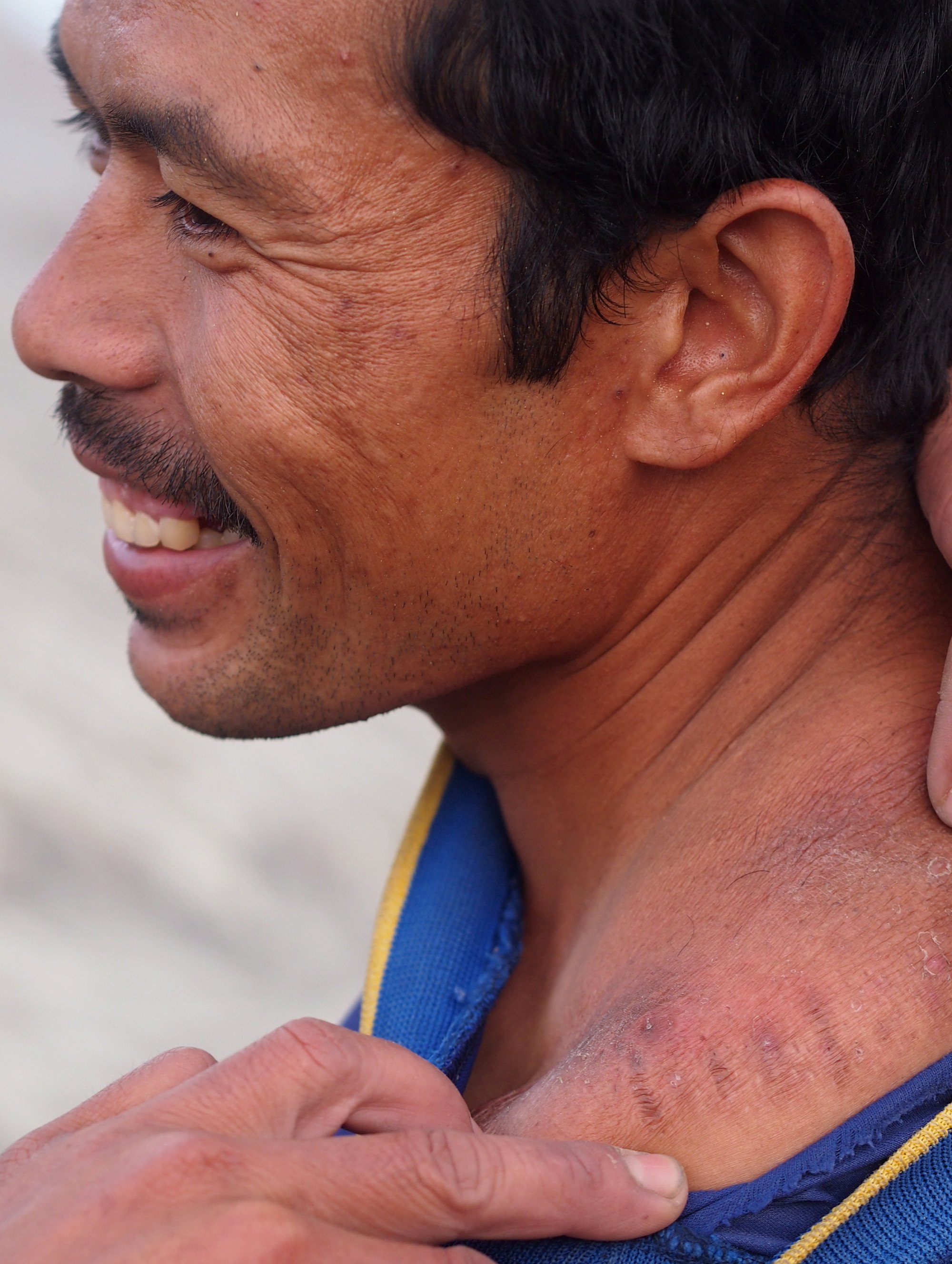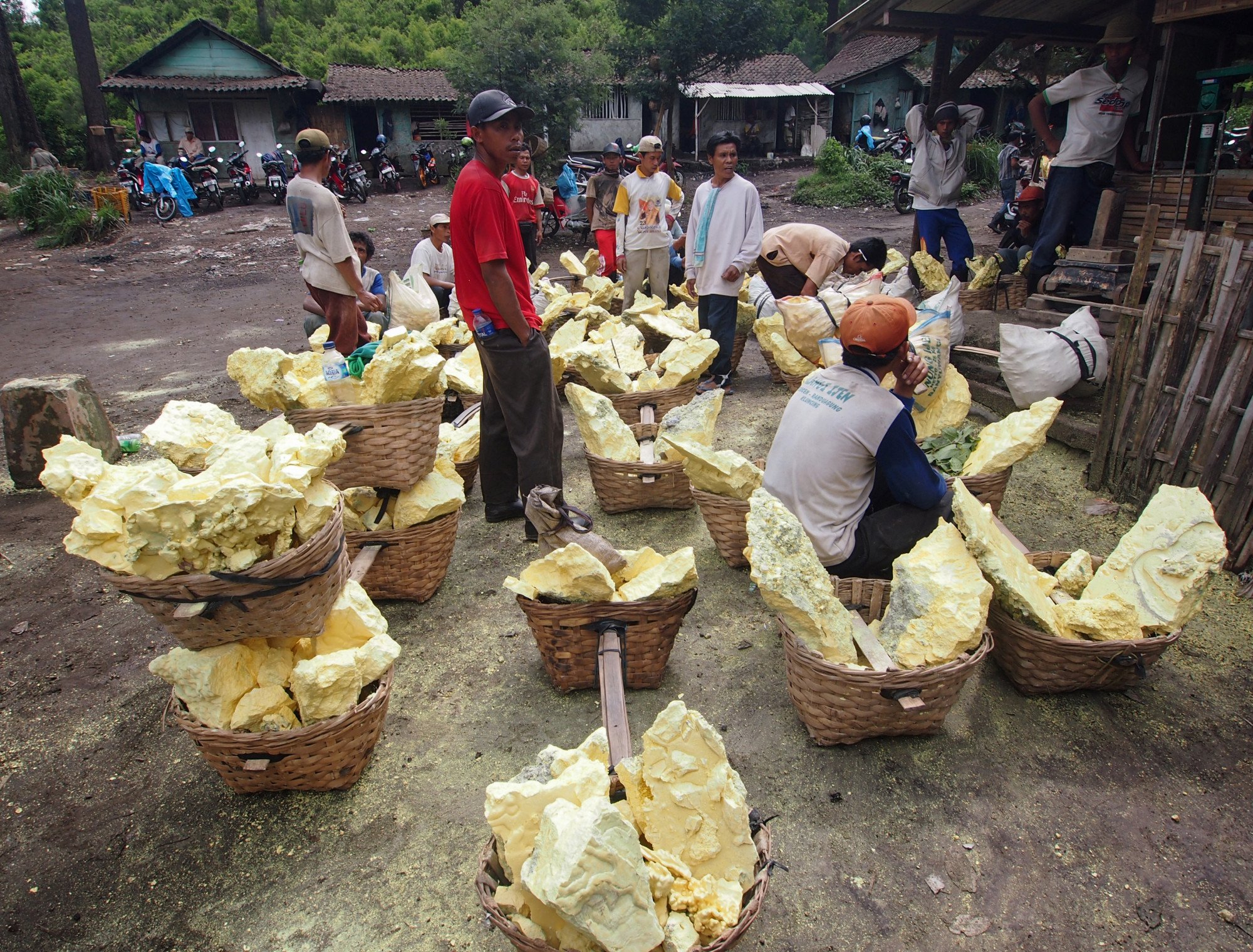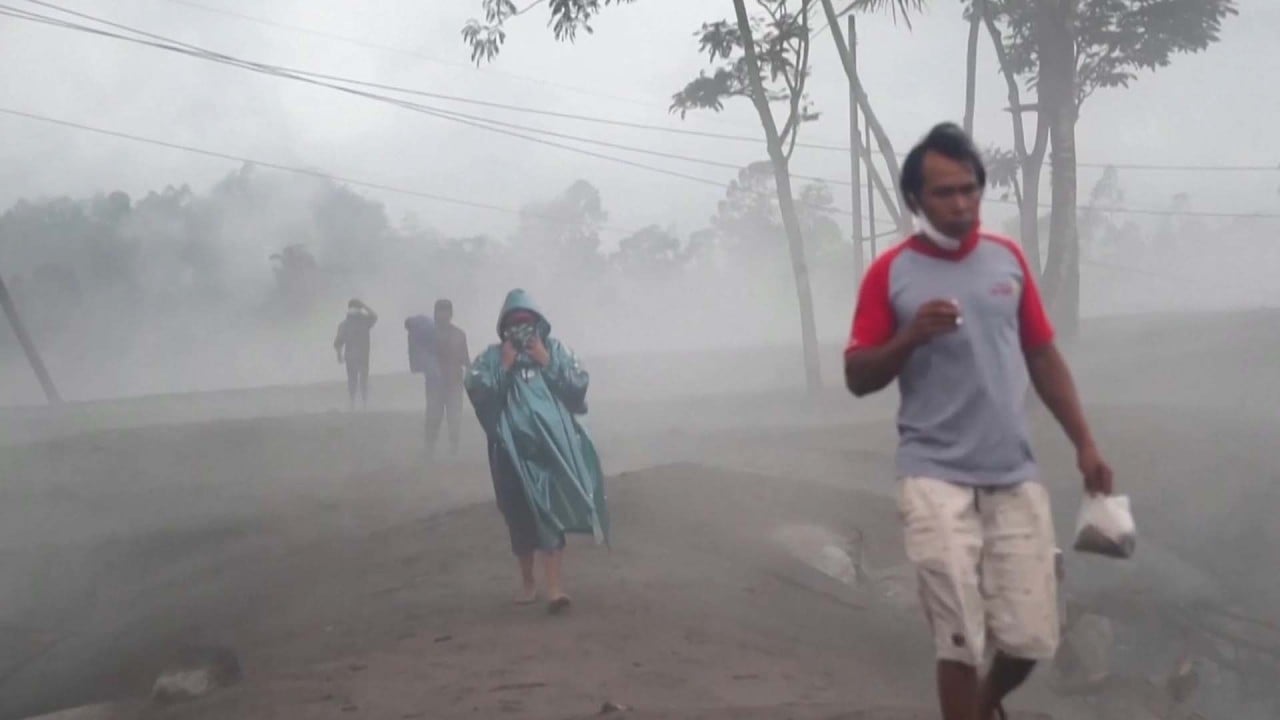
Why miners in Indonesia risk their lives to get sulphur from inside an active volcano
- Hundreds of miners work inside the Ijen volcano, an active volcano in Indonesia to unearth sulphur, an essential ingredient in sugar, detergent, and gunpowder
- Working conditions are so dangerous, many miners don’t live past 50 years old
In East Java, Indonesia, hundreds of miners face deadly smoke to mine sulphur, or “devil’s gold.” They risk respiratory illness and death to haul 200-pound loads of sulphur up crater walls.
The Ijen volcano complex is a group of volcanoes located on the eastern end of Java.
Throughout their workdays, the miners battle toxic fumes.
They’re mining sulphur, which locals call “devil’s gold” because of its two colours.
Miners carry up to 200 pounds of sulphur on their backs, up and down steep cliffs. It’s common for their shoulders to swell or develop pimples. A sulphur miner hikes up a steep cliff.

Sulphur is a common household ingredient, used in everything from matches to batteries to sugar. It’s an essential ingredient in rubber products and winemaking, and it’s used in fireworks and gunpowder.
Despite its risks, sulphur mining is an attractive job in this remote part of Indonesia. It pays well compared to the island’s other trades: sulphur miners earn about US$12 to US$17 a day.
At the start of each day, Mistar, a sulphur miner, travels to the crater on a bicycle until the road ends. Then he hikes 2 miles to the ridge of the volcano.
He takes only his basket and crowbar down into the 1,000-foot-deep crater.
The volcano has an extreme environment, where the air can reach over 100 degrees Fahrenheit.
Mistar works near one of the world’s most toxic volcano lakes. The acid content in the lake is like battery acid, and if it comes into contact with workers’ mouths, their teeth could fall out. If ingested, it is deadly.
“The smell of sulphur smoke is very strong,” Mistar said. “It smells sour, sometimes like the smell of eggs being fried. But if it gets into your nose or mouth, it will suffocate us. It makes us cough. “Miners protect themselves from the sulphur smoke with masks.
While mining company PT Candi Ngrimbi owns the license to run the mine, the miners here are contractors, so they have to pay for their own gear. Many cannot afford gas masks, so they use handkerchiefs or towels dipped in water to keep the sulphur powder from sticking.
When the hot smoke hits the cooler air outside, it condenses into a liquid and drips off the pipe.

As the liquid cools and solidifies, it turns yellow. Then the miners can begin chipping off blocks of the sulphur.
Miners use their bare hands to move these blocks, even though frequently touching solid sulphur can cause rashes and blisters.
Once he fills his baskets, Mistar hoists them onto his shoulders to hike back. But it is not a light load: Mistar weighs 132 pounds, and the maximum weight he can carry is about 154 pounds.
Some of the younger miners can carry up to 200 pounds in one load. They have to haul it up the steep walls of the crater.
Once he reaches the rim of the crater, Mistar can transfer the sulphur to his trolley and begin the trip back home. Mistar makes this trip twice a day.
Indonesia’s bauxite ban risks WTO complaint but won’t rock global supply
At the factory, which is owned by PT Candi Ngrimbi, workers boil the sulphur and run it through a series of filters. They have to remove any contaminants, like sand or dirt. Liquid sulphur goes through a series of filters.
Then they pour it out onto the factory floor to cool.
About 98 per cent of the world’s sulphur comes from the oil and gas industry, and oil companies are required by law to process it safely. Today, the sulphur industry from oil and gas is worth almost US$13 billion and is expected to keep growing.
This has made natural mines in volcanoes virtually unnecessary, especially since mined sulphur is not as pure as the sulphur that is a by-product of refining. Mined sulphur is not as pure as sulphur from refining.

Ijen is one of the only places left in the world where people still mine sulphur this way, despite the danger. It’s cheaper and easier for the mining company to get sulphur from Ijen, and mining pays more than other jobs on the island, like farming.
Another possible reason the mine is still open is tourism.
At night, visitors flock here to see the blue flames from the sulphur gas.
During the day, tourists hike up to take in the vistas, watching the miners work.
Working conditions here are so dangerous, many miners don’t live past 50 years old.


